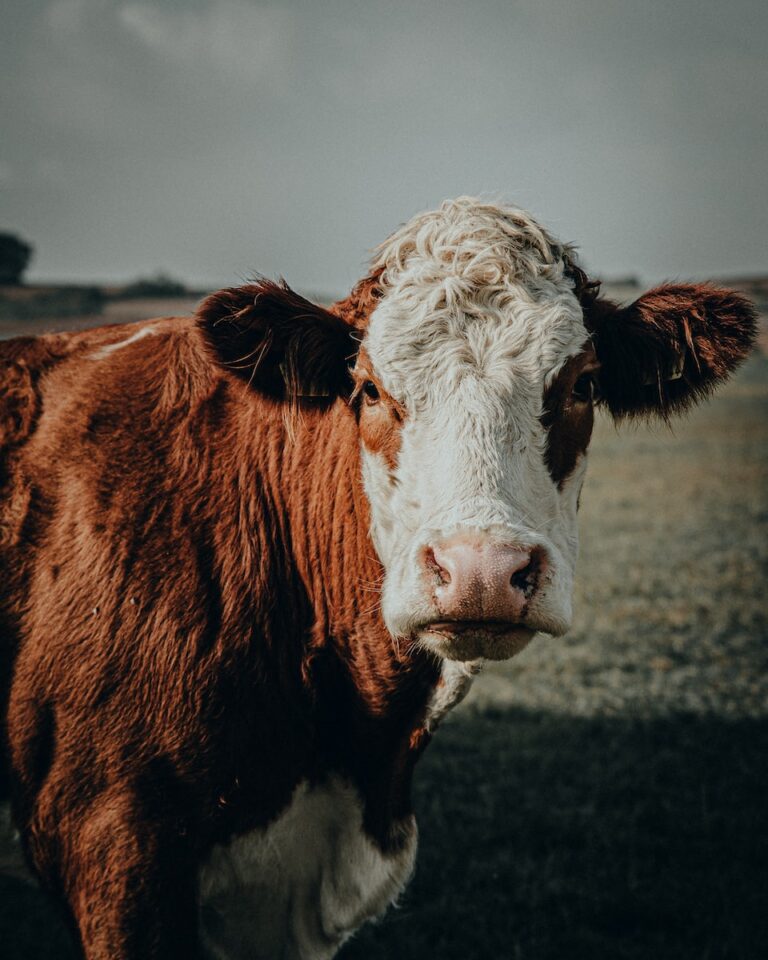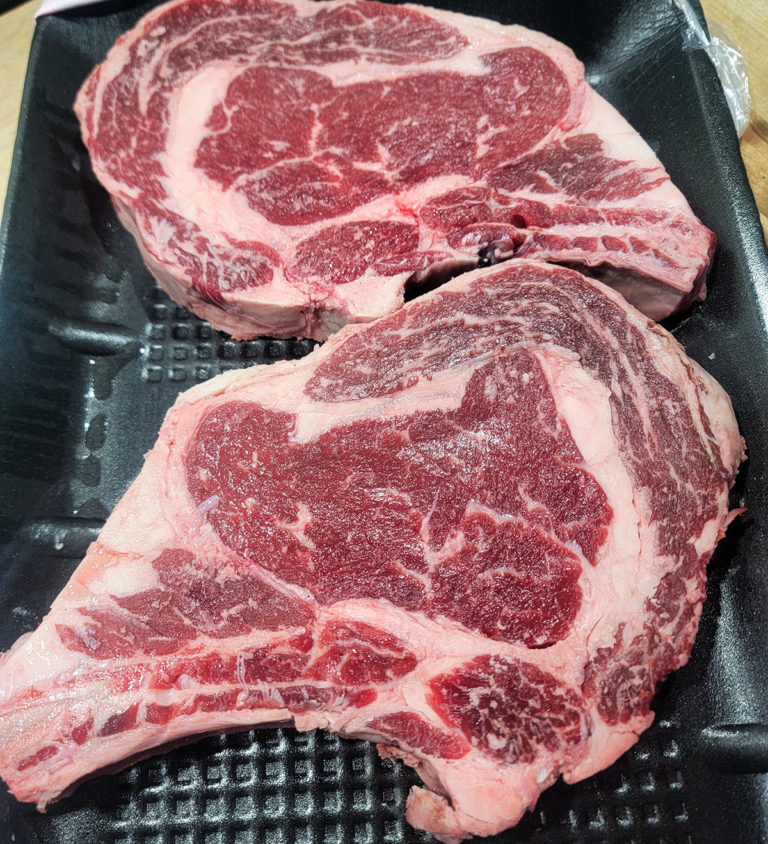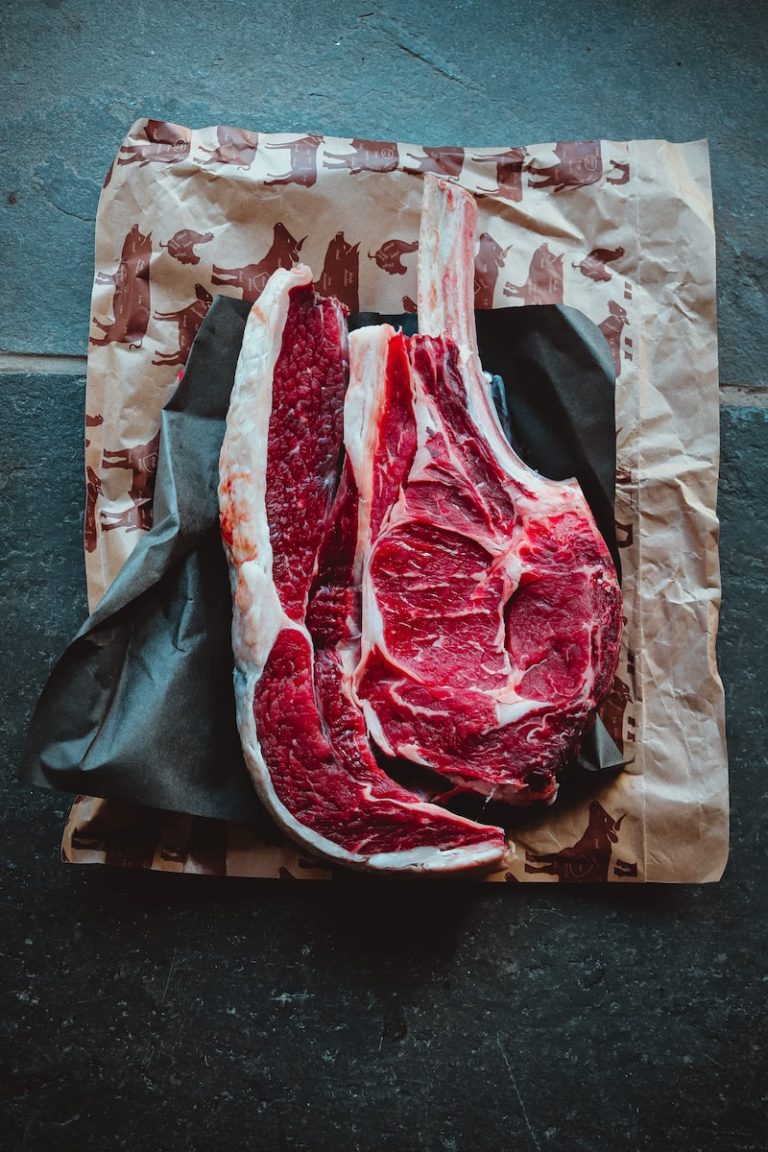What the heck is histamine intolerance, and what does it have to do with the Carnivore diet?
When I first started the Carnivore diet I struggled with eating cooked ground beef. I couldn’t understand what could be so different between that and a steak – they’re literally the same ingredient! But every time I ate cooked ground beef I’d get bad indigestion, brain fog, and the worst fatigue – I couldn’t keep my eyes open!
So, I simply avoided ground beef for the most part.
That was easy for a long time, until it wasn’t. Eventually I really needed to find a way to make ground beef work because of a) convenience and b) price. Mostly I saw this as an annoying challenge to overcome.
A few years later I went to a friend’s birthday party. I ate about half a dozen raw oysters (notoriously high in histamine!) and within 30 minutes I had such terrible neurological issues I could barely walk and felt like I had been drugged. It took me several months to fully recover from that one incident of overloading my body with too much histamine!
6 years ago, the Carnivore diet was not being talked about on every podcast or even remotely considered a valid diet for people to try. If you identified as a Carnivore you may as well have told the people who love you that you’re a cannibal.
But as it’s grown in popularity, one thing has become really clear, histamine intolerance can be an oddly common issue that people encounter when they become a Carnivore. If that’s you, let’s dig into histamine intolerance here. Not just what it is, but how you can better navigate it while eating a Carnivore diet.
What is Histamine Intolerance?
I’m going to keep this very high-level. If you want to dig further into the physiology of histamine intolerance outside of this article I strongly encourage you to do so.
You may have heard of Histamines in relation to seasonal allergies. People take OTC and prescription anti-histamine medications all the time. histamine intolerance from foods is similar but also very different from what happens with seasonal allergies.
The body produces the enzyme Diamine Oxidase (DAO) to break down histamine. For some individuals it may not produce enough, for a number of reasons. There are also some forms of gut dysbiosis that may cause an increase in histamine-secreting bacteria((Intestinal Dysbiosis in Patients with Histamine Intolerance, 2022)).
It’s not uncommon for individuals diagnosed with mold toxicity or heavy metal poisoning to also suffer from histamine intolerance, so in some cases it appears it may be more of a symptom than a primary disorder.
When you overwhelm the body with more histamine than it is able to break down you begin to experience specific symptoms related to histamines.
These can include:
- digestive issues
- abdominal pain
- bloating
- diarrhea
- constipation
- flatulence
- nausea
- vomiting
- headaches or migraine
- nasal congestion or sinus issues
- running nose
- watery eyes, sensitive to light and wind
- skin flushing
- fatigue
- extreme sleepiness (cannot keep eyes open)
- itchy skin
- eczema, psoriasis, and other skin issues
- crawling sensations on your skin or scalp
- hives
- irregular menstrual cycle and menstrual issues
- abdominal cramping
- tissue swelling
- high or low blood pressure
- irregular heart rate
- anxiety
- difficulty regulating body temperature
- difficulty breathing or asthma attacks
- dizziness
- odd euphoria / feeling of being drug-high
Also, be aware that there is an associated issue, Mast Cell Activation Syndrome (MCAS). In MCAS the individual will always have some form of histamine intolerance, whereas individuals with histamine intolerance do not all have MCAS.
That can be helpful to know as you interact with others who have histamine intolerance and/or MCAS.
What Increases Histamine Levels?
Oxidation causes histamine levels to increase in foods. Exposure to the following contribute to oxidation:
- Heat
- Light
- Time / Age
Also, keep in mind that the surface of a food will oxidize faster than the interior. For that reason, being mindful of the surface area of your food compared to the total volume is important when picking low-histamine options. E.g. ground meat will always be higher in histamines than a cut of steak because the surface area has been increased exponentially with grinding.
In the real world, what this means is that lower-histamine food options will be those that are the freshest (less age), the most uncooked (using freezing techniques to store meat up until it’s ready to eat is helpful), and which has not been exposed to any/much light.
How to Reduce Histamines
Once your body is overloaded with more histamine than it is able to break down, it can take much longer to bring the level down to a point where you are no longer experience symptoms. Depending on the individual it may be days, weeks, or months.
For that reason, it is almost always worth preventing an overload rather than dealing with the consequences.
Some strategies that can be used to reduce your histamine load quickly include:
Low Histamine Diet
Adjusting your diet to cut out as much histamine-containing food as possible is paramount to quick recovery. The more histamine you continue to eat the longer the time it will take to recover from the overload.
For those on the Carnivore diet this means:
- No processed meat products like bacon, sausage, jerky, or canned meats.
- No bone broths or meat broths of any kind (store-bought or homemade).
- No ground meat products of any kind1.
- No or very limited beef purchased through retail markets2.
- No shellfish and limited seafood.
- No dairy, especially hard cheeses and fermented products (like kefir and yogurt).
- Pick thick cuts of steak over thin ones3.
- Use a low histamine cooking method.
- Do not eat leftovers under any circumstances!
- Make use of freezing meat until you’re ready to use it. This slows down histamine production.
Dirty Carnivore? These are some especially high-histamine foods you should also avoid:
- avocado
- dried fruit
- strawberries
- tomatoes
- bananas
- eggplant
- papaya
- wheat germ
- cocoa / chocolate
- spinach
- long-stored nuts (e.g. walnuts, cashews, pistachios, almonds, etc)
- vinegar (white, red, rice, etc)
- beans
- alcohol (all forms)
- peanuts
- soy (all forms)
- gluten
- fermented foods (like kombucha, kimchi, saurkraut etc)
- pickled foods
- grains
- certain spices (e.g. cloves, curry, nutmeg, paprika, cayenne, seasoning packets, etc)
- anything containing yeast
- anything containing preservatives and artificial coloring
Low Histamine Cooking Methods
The way you cook your food matters too!
The best cooking method to keep histamines low is to boil the meat, discarding the water afterwards (which will contain the bulk of histamines). The next best is sous vide cooking.
Better than either of those methods is to eat your meat raw right out of the fridge. This is absolutely the lowest histamine approach, however, it may not be for everyone. How dangerous is eating raw meat though?
You should absolutely avoid the following cooking methods at all cost:
- Slow-cooking / pressure cooking
- Smoking
- Grilling
- Frying
- Broiling
- Anything that browns your meat
Supplements
Some supplements can help your body better cope with breaking down histamines.
- Vitamin C – sodium ascorbate or calcium ascorbate only! Take every few hours through the day. Avoid citrus-based forms of vitamin C at all costs (continue reading for more on this).
- Stinging Nettle – tea or extract. I’ve found it challenging to find a supplement form that does not contain rice powder. This one is interesting because it actually contains histamine but is known to calm histamine overload as a supplement.
- Quercetin – not recommended to take this long-term. Only as-needed in the short-term.
- DAO – does not work for all individuals and is expensive, but some find relief here.
Reviewing most people’s experiences shared on Carnivore boards, OTC anti-histamines do not improve their symptoms and instead come with their own unwanted side effects to add to the already-bad experience.
Read Supplement Ingredients Label!
It’s very important to read the full ingredients label when buying any supplement to be sure it does not include any ingredient which contains histamine itself or is known to liberate histamines in the body. See the next section for more details on histamine liberators.
In particular, watch out for citric acid, ascorbic acid, bromelian, and carrageenan!
Avoid Histamine Liberators
Some foods and activities are referred to as histamine liberators, aka they stimulate the release of endogenous histamine. They liberate histamine from your own cells, contributing to the overall level of histamine that your body has to breakdown.
Avoiding these can help you recover from a histamine overload more quickly. And being mindful of their contribution to your total histamine load can also help you prevent overloading your body in the future.
You should also be very careful to read all ingredient labels for any supplements you take to be sure they don’t contain histamine liberators in their whole or any extracted forms.
Histamine Liberating Foods:
- Citrus – including citric acid and ascorbic acid which are some of the most common additives in supplements and drink products.
- Spinach
- Tomatoes
- Eggplant
- Avocado
- Strawberries
- Papaya
- Bananas
- Kiwi
- Pineapples – be wary of supplements containing bromelian which is extracted from pineapples.
- Carrageenan – a common food additive, check your toothpaste ingredients for this one!
- Additives (e.g. benzoate, sulphites, nitrites, glutamate, food dyes, etc)
Avoid DAO Blockers
Some foods block DAO from breaking down histamine and should be avoided at all cost. These include:
- Alcohol in all forms
- Caffeine in all forms (e.g. coffee, energy drinks, black teas, Maté tea, pre-workout, etc)
Avoid / Limit Heat-Inducing Activities
Certain physical activities can also liberate histamines and worsen your symptoms.
In general, these are going to be activities that increase your core body temperature, and include:
- Sun exposure
- Sauna
- Hot tub / bath
- Cardio / HIIT and similar activities
Oxalates and Salicylates
Often, people who become histamine intolerant also suffer worse symptoms from oxalates and salicylates as well.
You may want to explore this in more detail on your own time, this article is a good starting point for a high-level intro.
How Much Histamine is Too Much?
Each person’s threshold for histamine is different, so there is no specific amount you should limit yourself to.
Additionally, there is no reasonable way to judge the total volume of histamine in a given food before you eat it.
It can be very helpful to keep a food diary to track what you eat and how you feel each day. Over time you’ll learn to make adjustments based on the log you keep. The more accurately you log each day the better you will be able to make small changes over time.
Did the Carnivore Diet Give Me Histamine Intolerance?
It’s quite unlikely that the Carnivore diet itself gave you histamine intolerance.
From my observations, most people gravitate towards Carnivore diet because they’ve been facing one or more chronic health issues and are hoping Carnivore will cure it.
In the process, they uncover some of the true issues of their chronic health problems that may not be directly caused by diet alone. This could be mold toxicity, heavy metal poisoning, or something else entirely.
The Carnivore diet can be a great tool to help uncover the root cause of chronic health issues even if it doesn’t eliminate them completely.
Additionally, there are aspects of the Carnivore diet itself that can add some stress in the beginning. For example, eating strict Carnivore is automatically a zero-oxalate diet. When you stop eating oxalates your body is finally able to start dumping stored oxalate from various organs.
Oxalate dumping can result in a whole host of unwelcome and uncomfortable physical symptoms. Oxalates may also have a contributing role in histamine intolerance as mentioned above.
Closing
I hope this has been a helpful article, and reference for you as you learn to navigate possible histamine intolerance as a Carnivore. ❤️ Did I miss something important? Leave it in the comments below!
- The surface area is increased exponentially when meat is ground. This increases total oxidation and the histamine level rises dramatically beyond that which would take place with a cut of steak. [↩]
- standard beef is hung for ~2 weeks before butchering, and is often aged much longer before you purchase it at your local grocer. If you can, source direct from the farmer and request that it not be aged at all. Be mindful that this approach may increase your cost substantially. [↩]
- Again, consider total surface area to volume of meat. [↩]






